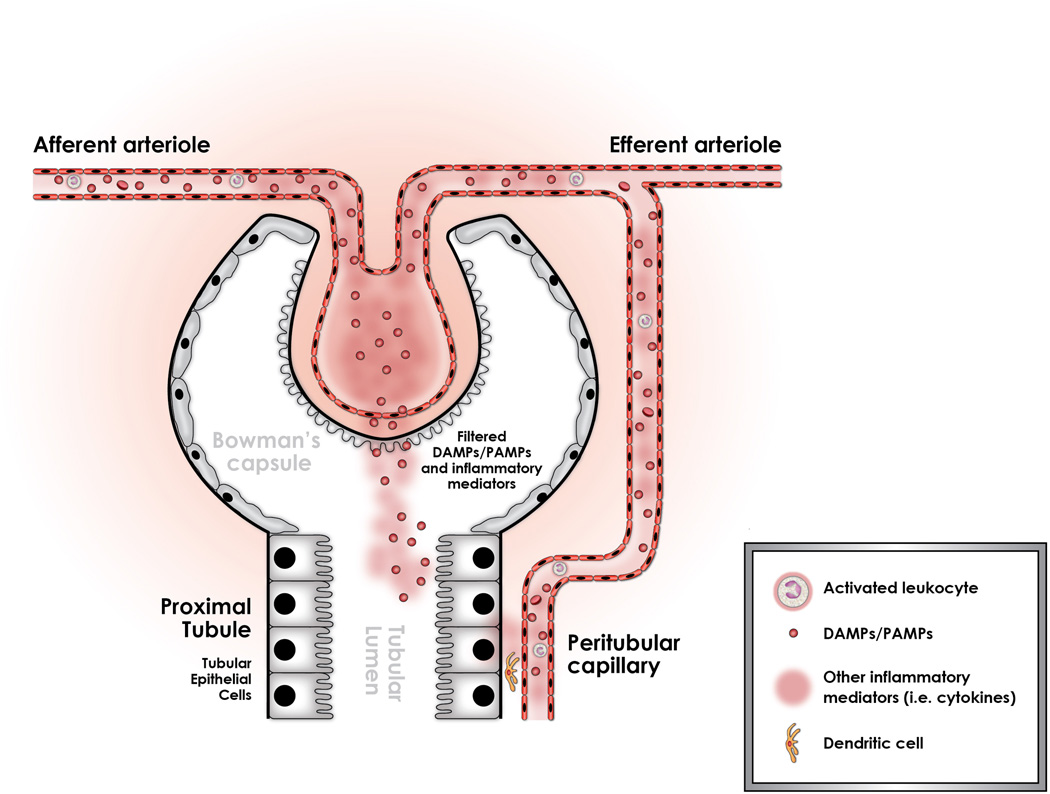Figure 1.
Sepsis is associated with the release of damage and pathogen associated molecular patterns (DAMPs and PAMPs) into the circulation. These inflammatory mediators are derived from bacterial products as well as from the immune cells which respond to infection. Together, they constitute an alarm “danger signal” that can be recognized by and can potentially injure the tubular epithelial cell. It has been shown recently that these mediators can readily gain access to the tubular space through glomerular filtration. Specifically, LPS has been shown to be filtered through the capsule of bowman, and into the tubular fluid. Once in the tubular space, LPS can directly interact with the tubular epithelial cell which can recognize it through a TLR-4 – dependent mechanism. Alternatively, there is indirect data suggesting that inflammatory mediators released by activated leukocytes in the peritubular capillaries can stimulate the tubular epithelial cell. It is unknown however, if this stimulation occurs by direct migration of these DAMPs through the endothelial and epithelial layers, or if they exert their actions through cellular interactions activating the endothelium, stimulating dendritic cells and ultimately, triggering a response in the tubular epithelial cell.

